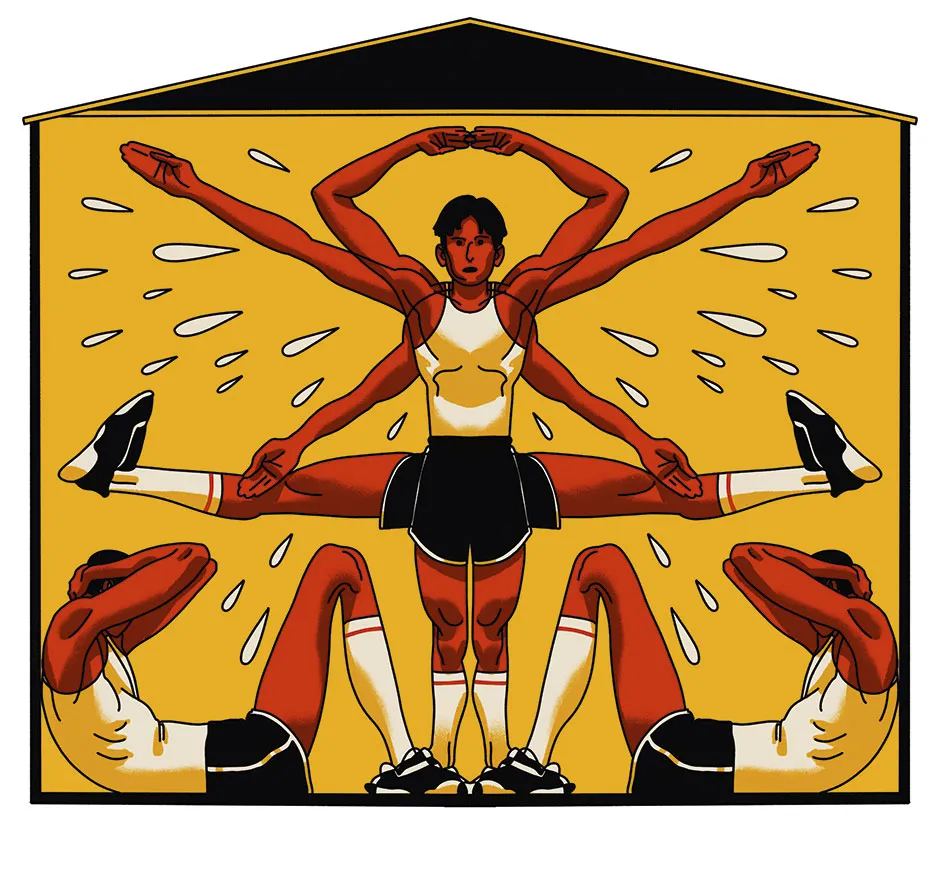There’s no need to go the gym
Everyone can exercise at home. During the pandemic, life has been different and lots of people have started doing online workouts. Joe Wicks has been popular, for example. We’ve been exploring how well these apps and online programmes work.
Apps and online workouts can be helpful…
…but they’re even better if they’re supplemented with a personalised smart watch that guides you through the exercises and gives you feedback on how well you’re doing them. We have found that people with these watches exercised more and were less likely to give up than the people without them.
Think about exercise intensity
Our research made us realise that it’s vital to teach people how to exercise. Exercise intensity is important. Too intense and it will be unpleasant. Too weedy and you won’t feel the benefit.
We programmed a smart watch so it can guide people to exercise at the right intensity, but you can do the same thing by monitoring your breathing. If you’re doing light exercise such as walking, you should be able to sing. If you’re doing high-intensity interval training, you should be so breathless that you can’t speak.
Need to know...
- Exercise intensity is really important. Monitor your breathing to establish how hard you’re working.
- Getting a six pack is really hard (don’t believe social media posts). Instead, focus on eating well and doing cardio.
- Start with online apps and workouts – find one that you enjoy and aim to exercise twice a week.
There is no ‘best exercise’
There’s only what’s best for you. Short bursts of high-intensity exercise are great, but they aren’t for everyone. Similarly, not everyone has time for a lengthy walk. Think about how much time you have, how hard you want to work and the sorts of exercise you enjoy. As long as you hit these three things, it doesn’t matter what you do. A 20-minute high-intensity interval session can be just as good for you as a 30- to 50-minute walk.
You don’t need a lot of space
If you have a room that’s tall enough to stand in, and long enough to lie down in, then it’s big enough. Star jumps and sit-ups don’t take much room.
Aim for two sessions a week
Our research suggests that people who do two exercise sessions a week improve their fitness more than those who train once a week or not at all, and the improvement is pretty similar to people who train three times a week.

You don’t need any special equipment
Instead, as you get fitter, modify the exercises that you do. Increase the intensity or duration. You don’t need fancy equipment for this.
Stay motivated
Set yourself an achievable goal such as, “in 12 weeks’ time, I want to be able to jog for 10 minutes without stopping.” Start small and build up incrementally. Tell your family and friends what you are up to so they can prise you off the sofa if you’re having a bad day.
Read more fromA Scientist's Guide to Life:
- 33 simple ways to improve your life with science
- A scientist's guide to life: How to concentrate
- A scientist's guide to life: How to sit correctly
- A scientist's guide to life: How to stay warm
Exercising before breakfast could be helpful
There’s some evidence to suggest that if you exercise after a meal, the body burns more carbohydrate, but if you exercise before a meal, the body burns more fat. This suggests that exercising before breakfast could be a good idea, but be careful – it makes some people dizzy so it’s not for everyone.
Sit-ups alone will not give you a six pack
It’s really difficult to get a six pack. You need good nutrition and low levels of body fat. Eating well and bouts of long, low-intensity cardiovascular exercise can help.
- This article first appeared inissue 360ofBBC Science Focus Magazine–find out how to subscribe here
